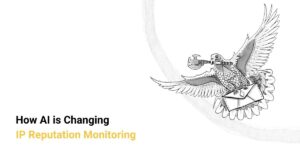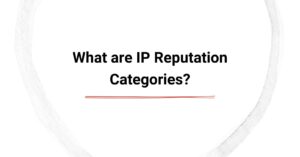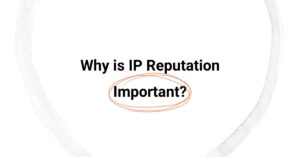With billions of daily correspondences, email marketing continues to be the most popular business communication tool. Whether you run a small business or a large corporation, email marketing is the most efficient and cost-effective communication channel for nurturing relationships with customers and partners.
Building a robust email list facilitates the easy distribution of newsletters, special offers, product promotions, and other correspondence. However, despite your best efforts, your subscriber’s list will accumulate invalid email addresses over time. Cleaning your email list removes invalid addresses that affect your email deliverability and sender reputation. This, in turn, improves your open, click-through, and conversion rates.
What is Email Cleaning?
Email list hygiene involves reviewing and updating your contact database to remove outdated, inactive, and invalid addresses. This ensures your marketing messages are only delivered to subscribers who can potentially engage with your business.
Email list cleaning can improve the quality of your customer data and increase the effectiveness of your email campaigns. Better yet, scrubbing your mailing lists will help you comply with email marketing regulations, such as the GDPR and CAN-SPAM.
How Does Email List Hygiene Work?
Email list hygiene begins with identifying and eliminating problematic and potentially harmful email addresses. You can do this manually or with the help of a specialist email verification service like Alfred. Keep an eye out for the following types of invalid emails:
- Email addresses with incorrect domain name, syntax structure, or format
- Email addresses without a legitimate mailbox
- Bounced email addresses
- Catch-all email addresses
- Spam email addresses
An email cleaner verifies if an email address exists and can receive emails, ensures the validity of your email lists, and eliminates fake emails. Utilize an email verification service to look for spam traps and lower your risk of email service providers blocking you.
How Often Should You Clean Email Lists?
For good measure, we recommend cleaning your email lists every three months. However, the frequency depends on several factors, like the size of your contact lists and how often you email clients. For example, you should consider cleaning your email list before launching a new campaign. Search for duplicate and invalid email addresses, syntax errors, and typos. We recommend using an email verifier tool to accelerate the process.
How Can I Verify Emails in Bulk?
Bulk email verification can make or break your email campaign. Use a bulk email verification tool like Alfred to clean up your contact lists and elevate your marketing campaigns. Removing disposable emails ensures the messages reach the recipient’s inbox. This helps improve sender reputation.
A bulk email address checker also removes spam traps from your lists. Since spam traps monitor email distribution, emailing these addresses can send your marketing correspondences to the spam folder. Hence, you can drastically improve sender reputation and deliverability by removing spam traps from your mailing list.
What are the Risks of Not Removing Invalid Email Addresses?
Not cleaning your email lists can have severe repercussions with long-lasting effects. The list includes:
- Damage to your sender reputation from hard bounces
- Rising spam complaints
- Greater unsubscribe rates
The damages can accumulate over time and disrupt your ability to reach the intended recipient. So, you’ll need to maintain optimum list hygiene to increase email deliverability and sender reputation.
Does Cleaning Email Lists Improve Deliverability?
Scrubbing your mailing lists frequently can help improve deliverability. If a significant percentage of your emails remain undelivered, get blocked, or are sent to the spam folder, it hurts your deliverability score. An email validator will identify if an email address is valid, so you can decide what to do with it.
While spam traps, zombies, and invalid addresses must be removed from your email list, you can also segregate the inactive users and run a retargeting campaign to get them to reengage with your business. Removing undeliverable emails improves email deliverability by showing internet service providers that you’re a responsible sender.
Best Practices for Email List Cleaning
Email list cleaning is a comprehensive task that looks different for every business. However, here are the best practices to help you stay on the right side of things:
Use Double Opt-ins for New Subscribers
Even when someone signs up for your newsletters, substantiate their consent with a confirmation link. While this may seem unnecessary, it’s an effective way to verify an email address.
Simplify Unsubscribing
Make the unsubscribe button visible. This simplifies list cleaning and reduces your chances of triggering spam complaints.
Automate Your Marketing Efforts
Use automation tools to organize and send emails on a schedule. Use marketing automation to nurture new relationships with welcome emails or send payment confirmations with transactional emails.
Clean Your Mailing Lists Frequently
Cleaning your email lists once every six months can remove risky emails from your mailing list. This minimizes the bounce rate by ensuring your emails are delivered successfully.
What are the Signs That You Need to Clean Your Email List?
While your sender reputation is a reliable indicator of your email list’s health, it can reveal more than just problems with your mailing list. For instance, a low sender reputation can be a sign of inconsistent marketing efforts or sub-par content quality. So, how do you identify if your email list hygiene needs maintenance? Here are a few indicators to consider:
High Bounce Rates
You should analyze the performance of every email campaign closely. If there is a sudden rise in bounce rates, use a free email checker to identify the responsible email addresses. Not all bounces occur for the same reasons. Hard bounces are the ones that you must eliminate immediately, while soft bounces are usually caused by temporary issues.
Low Open and Click-through Rates
User engagement is mostly measured by open and click-through rates. Therefore, a poorly maintained email list can severely affect engagement. The best way to get back on track is to get to the bottom of what’s causing the engagement drop. An email validation service streamlines troubleshooting and conducts a thorough cleanup.
Bot Subscribers in Your List
There are a few ways to identify if your mailing list is being invaded by spambots. Here are a few things to watch out for:
- Sudden increase in sign-ups
- Decrease in open rates
- Spammy email addresses
- Increase in spam complaints
- Higher unsubscribe rates
Five Powerful Email List Cleaning Strategies
Now that you know why email list hygiene is essential, let’s walk you through the steps of email list cleaning for maximum engagement.
Run a Preliminary Scan
Just like a spring cleaning session at home, you want to tidy up before running a deep clean. Remove the most obvious problems staring you in the face before delving deeper. You can start by identifying unused segments or contacts that are no longer relevant.
Check if an email address is present on multiple lists, monitor the last interaction, and delete duplicates as necessary. Ensure everything aligns with your current organization and that your marketing strategy is up-to-date.
Segregate Your Email List
For a clean email list, segregate your subscribers into three categories:
- Those who love your emails and interact with your every message
- Those who open your emails intermittently
- Those who ignore your emails entirely
Use an email cleaner to automatically segregate and validate email addresses. Marketing automation can also help identify low-engagement subscribers. You don’t have to remove them from your mailing list, as you can engage with them later.
Send a Re-engagement Campaign
A low engagement rate doesn’t necessarily mean that a real person does not want to interact with your business. They may not like the type of content you’re sending or not remember your business. Hence, unengaged subscribers can often be lured with the right re-targeting efforts, such as:
- Exclusive content
- A special perk
- Free gifts or discounts
Sometimes subscribers enjoy your content but are just experiencing email fatigue. This is common during the holiday season when inboxes are constantly flooded. So, you may need more time to evaluate the situation correctly.
Find Out Why Your Emails Bounce
Even valid email addresses for interested subscribers can bounce unexpectedly due to unforeseen circumstances like a full inbox or mail server error. Hence, identifying the reason behind your emails bouncing is a crucial step, especially if you run a B2B business. Corporate mailing lists mostly consist of work emails with shorter lifespans than personal emails. Therefore, they must be monitored closely.
Implement a Permission Reminder
Adding a line at the top of your email reminds recipients that they opted for the correspondence. This gives readers a chance to evaluate the reason they’re receiving the email message and minimizes spam complaints. They can also decide whether they wish to continue receiving emails from your business or not.
It’s a win-win because it allows people to unsubscribe when they think they’re no longer interested in what you’re offering. Unsubscribes in good measure benefit email deliverability as they prevent bad email data in the long run.
Enhance Your Email Impact: Act Now to Cleanse and Optimize Your Lists
If you wish to analyze your email list health and maximize deliverability, book a discovery call with us today! After comprehensive performance tests, our experts can also guide you through the whole process, including creating detailed reports and tailored strategies.









